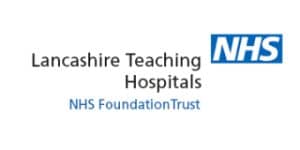
Network Assurance
The power of Network Assurance
Imagine the scenario and I am sure some of you reading this have lived it. You are the networks operations manager of a large prestigious organisation. They pride themselves with being at the forefront of technology in their specific field. You receive a call from the CTO of the organisation. He explains they and a group of company directors, are congregating at one of the newly refurbished offices. It goes without saying this is a very important meeting and Network Assurance is key!
The CTO informs you of the area and meeting rooms they intend on housing this meet. They have asked that you can assure them there will be no IT based problems during their visit. Better still they have asked for some proactive evidence that you have tested the area prior to their visit and can be certain the environment is fit for purpose.
Synthetic Testing
Historically you may have found yourself frantically pulling together a crack team of your finest engineers to perform onsite tests running applications on all types of possible media wired / wireless. They would correlate the data into a format only engineers can understand with in-depth packet captures and graphs that depict SNR values. You adjust the format as best you can so that upper management can use the data in some sort of presentable format if needed. Then the reality strikes you. In the panic of ensuring you provide management with data in time for the meeting. You are a week earlier then when the meeting takes place. Can you rely on these results? or could the environment change before the day of the meeting?
Wouldn’t it be great if you could complete the testing, say an hour before the meeting took place. Without your crack team having to be onsite (leaving empty coffee cups littered across the conference table). Whilst giving your CTO enough time to digest the information in a simple email format. One key component to achieving this tranquil network assurance environment is called ‘Synthetic testing’.
Even on the wireless media were environments are forever changing due to the nature of the technology. Introducing devices known as sensors into the network then allow you to run these synthetic tests. A 9 a.m. test can be executed ready for the 10 a.m. meeting that ensures the standard network components like DHCP and DNS are operating correctly or more tailored tests such as applications are being prioritised correctly over the network, such as voice or video traffic.
Proactive outage resolutions
From Synthetic testing you get a picture of the network at that specific time which can be great to highlight there are no issues on the network at a specific given moment in time but what really takes network analytics to the next level is the ability to analysis trends in the network that can identify the start of a network outage.
Take this same scenario we began with, we have a group of directors descending on a newly commissioned site. The entire organisation hears about this and suddenly everyone based out of that site feels the need to sit at a desk that day. Cisco DNA Center (DNAC), the hub of this entire EDNX solution has feeds into every network component and provides dashboard information for status on important services such as DHCP and a trend is developing. At 7a.m. 2000 people are seen connected to the network this has never been seen even at peak times in the day before and by 8a.m. it closer to 3000 clients and the DHCP scopes are close to full capacity.
This is no longer a problem DNAC spots this trend and provides an alert and here is the great part it provides it via the organisations network ticketing solution.
The simplicity of integration using APIs
With the ability for this management platform to leverage APIs there really isn’t any worthwhile application that can’t be integrated. In the case of the scenario we are discussing within this article. DNAC is integrated with the organisations network ticketing service and has proactively created its own Priority 1 ticket. Prompting the team to commission a new DHCP scope for the site and assign it immediately.
As mentioned the use of APIs means the integration capabilities are endless but just think of the benefits of a management platform that can hook into all your organisations applications for health checks.



